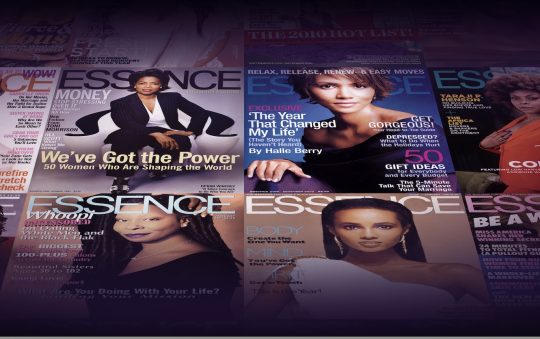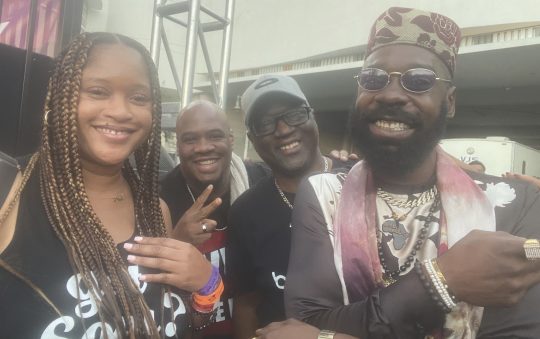
When Civil Rights comes to mind one of the first thoughts is Dr. Martin L. King Jr. His charismatic speaking and mobilization style boasted him to the forefront of the movement. While no credit could ever be taken away from the magnitude of his legacy there was a leadership wind beneath his wings especially during the March on Washington and the passing of the Civil Rights Bill of 1964 and the passing of the Voting’s Rights Act of 1965. That wind was known as The Big 6.
The “Big Six” is a term used to describe the six most prominent African-American leaders and organizations during the Civil Rights Movement; Martin L. King Jr Southern Christian Leadership Conference (SCLC), James Farmer founder of the Congress of Racial Equality (CORE), John Lewis president of the Student Nonviolent Coordinating Committee (SNCC), executive director of the National Association for the Advancement of Colored People (NAACP) and A. Philip Randolph, organizer of the Brotherhood of Sleeping Car Porters . It is important to note some did not include A. Philip Randolph in the listing of the “Big Six”, instead including Dorothy Height, president of the National Council of Negro Women as the sixth member of the group. The press often referred to the group as the “Big Four”, excluding Height and John Lewis. James Farmer attributed their omission to sexism and age bias.
With a new president set to take office in just days, many feel as if the United States is going back to a dark time in American history. For African Americans depending on age, flashbacks of before the Civil Rights Act of 1964 and 1965 become haunting and real in 2017. Black leadership today is confusing and hard to find but the blueprint of change was laid out under the leadership of the Bix Six and the brave individuals who supported and participated in the movement. Separately and sometimes together these organizations continue to fight for Civil Rights.

Legislation is a piece that falls weak in today’s fight; whether it be because of lack of interest from the people of lack of strong leadership in today’s fight. Roy Wilkins of the NAACP had an excellent reputation as an articulate spokesperson for the Civil Rights Movement he believed in achieving reform by legislative means, testified before many Congressional hearings and conferred with President’s Kennedy, Johnson, Nixon, Ford, and Carter. Today the NAACP continues to aggressively focus on legislation and leaders under the leadership of Chairwoman Roslyn Brock and president Cornell William Brooks, who was recently arrested along with 9 others during a sit-in demonstration in protest of Republican senator Jeff Sessions, (President-elect Donald Trump’s Attorney General nominee). “The civil rights movement of today does not focus enough on legislation coupled with the ballot box to effect substantive policy reforms and sustainable community change”, stated Brock. “With the heightened hate speech and divisive narrative of the past presidential campaign, the nation has moved backwards from the progress it made over the past twenty-five years”.
Big Six member John Lewis the only living member, now a legislator, one of the original 13 Freedom Riders and the youngest member of the Big 6, participated in the March on Washington (1963), the Selma to Montgomery marches (1965), and the March Against Fear (1966). He was a prominent civil rights activist from the 1930s to presently serving in the House of Representatives. Lewis continues to work on Capitol Hill and with all Big Six organizations. SNCC no longer exist its legacy continues through college activism and programs.
SCLC Southern California President William D. Smart believes, “the SCLC organization has to continue to apply the principles and philosophies of Dr. Martin Luther king Jr. “in today’s world we have to fight for justice in a nonviolent way, but be powerful fighters in standing up for the poor, disenfranchised particularly African Americans who are struggling every day” he stated. He continued to say that all organizations still work together at some time or another. Although he believes like Chairman Brock we are moving backwards with this new president-elect and administration, Smart believes “there will be a more fighting spirit of advocacy because of healthcare, immigration, criminal justice reform and economic opportunities for African Americans. Trump has taught people there is a value in voting. This is going to make it easier for organizations like the Big 6 to engage in voter and civic participation. You know King had a strategy of analyzing the problem, trying to negotiate it, then direct action, then a policy change.”
When asked if there were any practices of Dr. King that he applies in his leadership role Smart stated, “coalition building, direct non-violent actions and you really have to look at a strategy that effects the most people in the quickest time”.
The Urban League continues in the legacy of Whitney Young who spent most of his career working to end employment discrimination in the South and turning the National Urban League from a relatively passive civil rights organization into one that aggressively fought for justice. The Urban league continues the mission to enable African Americans to secure economic self-reliance, parity, power and civil rights through their signature program which focus on education, jobs, housing and health.
The National Council of Negro Women under the leadership of Dorothy I Height brought together black and white women from the North and South to create a dialogue of understanding. This was known as Wednesdays in Mississippi which helped mobilize for the marches. The organization continues to have a thriving membership and new agenda for a new age,” vowing to take urgent action around education, health, economic empowerment and public policy in an effort to build a stronger Black America. CORE (Congress of Racial Equality) the passion of James Farmer continues to fight for justice with programs on Immigration, equal opportunity, crisis intervention and job training and placement.
The Brotherhood of Sleeping Car Porters dissolved in 1978.






